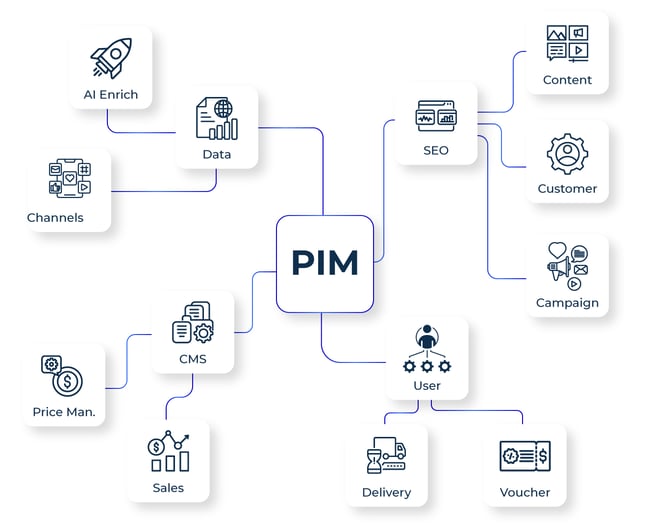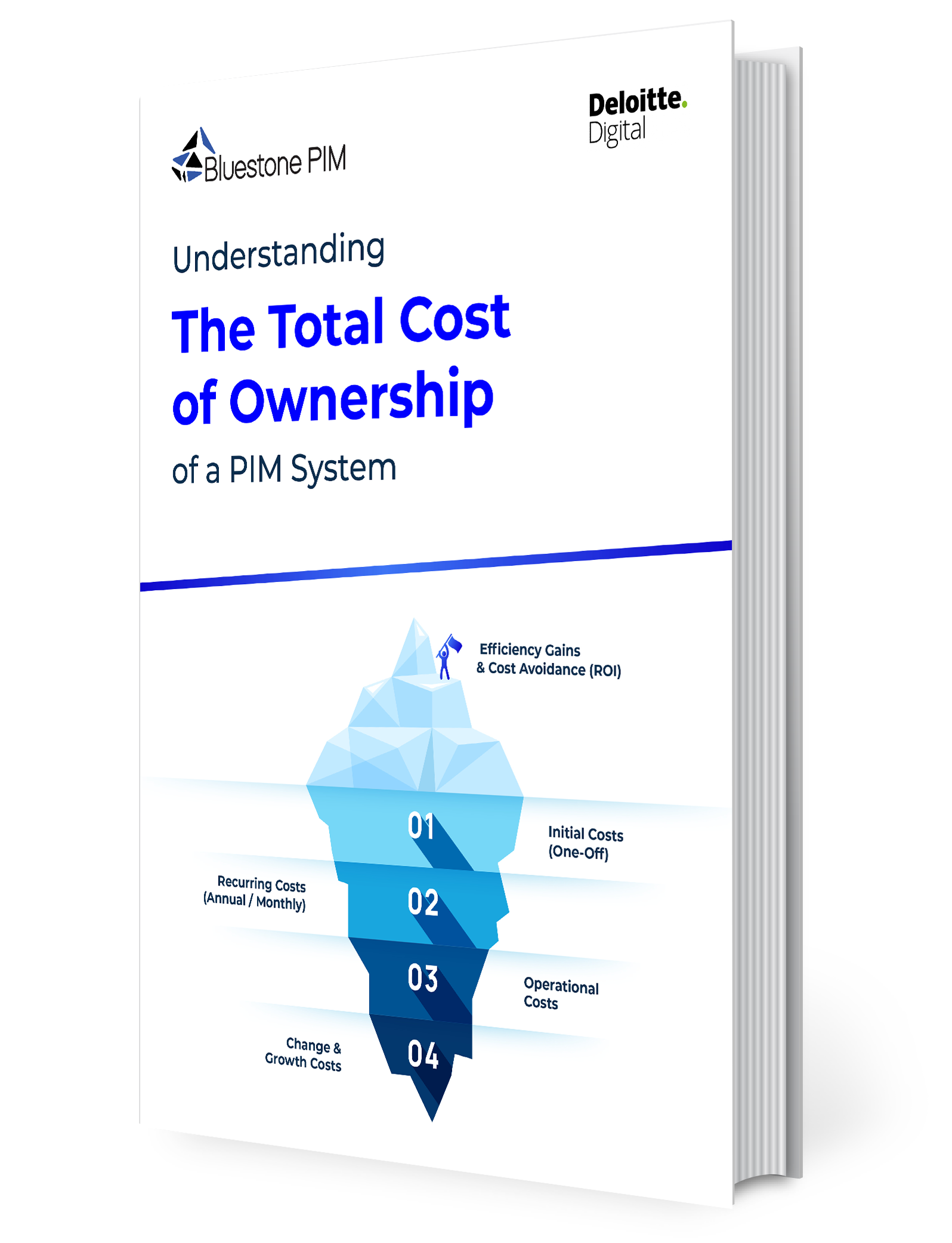Composable vs Monolithic PIM: What Enterprises Need to Know in 2025

Table of Contents
- Why Legacy and Monolithic PIM Systems Are Failing in 2025
- What Is Composable PIM and Why Enterprises Need It
- Composable Solution Is Not for Everyone
- Composable PIM Benefits: Speed, Scale, and Compliance
- Legacy Systems Are Holding You Back
- The Hidden Costs of an Outdated PIM System
- Why AI and Composable PIM Are a Match
- Monolithic vs Composable PIM: What to Choose in 2025
- Why Now Is the Time to Rethink Your PIM
Managing thousands of SKUs in Ecommerce?
Get monthly tips to become the e-commerce pro your team needs.
Product Information Management (PIM) was once about catalogues and basic e-commerce. It helped bring all your product data together, moving it out of spreadsheets.
Now, in 2025, things have changed. There are more sales channels than ever, and speed matters. Product data is now a real competitive advantage.
So, if you are reviewing your PIM system or thinking about AI, scalability, or new rules, here is what you need to know.
Why Legacy and Monolithic PIM Systems Are Failing in 2025
Most monolithic PIM systems were designed for an earlier time, when businesses had one or two channels, long product cycles, and print catalogues. Many were added as part of a wider e-commerce rollout, not because the business required a flexible product data platform.
The problem today is that traditional monolithic systems are slow to adapt. New features rely on the vendor’s development schedule, and updates cannot be delivered quickly. When market demands shift rapidly—whether driven by regulation, changing customer behaviour, or global events—your business is left waiting.
What Is Composable PIM and Why Enterprises Need It
Composable PIM is modular. It gives you the building blocks you need, like product data management, AI tools, enrichment automation, translations, channel feeds and lets you choose how to fit them together.
It’s the difference between buying a fixed product and building one that works for your business, your team, and your market.
You don’t need to wait for vendor updates. If your team requires new features, you can add them through prebuilt extensions. Bluestone PIM’s Extension Hub is a good example. It offers tools like price managers, bundle configurators, AI features and more.

Composable Solution Is Not for Everyone
Composable PIM gives you control, but with that comes responsibility. You’ll need internal ownership, clear goals, and a team that knows what they’re doing.
If your team is small, with limited digital maturity, or you have simple needs, a monolith might still make sense. However, if you are growing, launching quickly, or managing multiple markets and product categories, it may be time to consider moving to a composable approach.
Watch this video to find out when going composable is the right move for your business:
Composable PIM Benefits: Speed, Scale, and Compliance
A composable setup isn't just about flexibility. It's about business outcomes:
-
Launching products faster
-
Updating data in real time
-
Meeting new regulations like DPP without replatforming
-
Tailoring workflows to team roles and local markets
-
Scaling without heavy cost
One Bluestone PIM customer updated their system to comply with new French sustainability regulations—without needing support. They built a new attribute model, added regulatory tags, and deployed the changes across all channels. This is composability in action.
Legacy Systems Are Holding You Back
A common challenge for enterprises is that legacy systems—particularly Enterprise Resource Planning (ERP) platforms—still govern parts of the product lifecycle.
Years ago, it was fine for the ERP to hold some product data. But now when that product data needs to be enriched, syndicated, and updated constantly, PIM needs to move to the front of the stack.
But here’s what often happens instead: product content lives in Excel. Campaign teams do one-offs. Learnings disappear. Nothing repeats. The data flows, but only one way. You can’t make smart decisions when product data goes in and never comes back.
The Hidden Costs of an Outdated PIM System
Let’s talk about money. Old systems are deceptively expensive. They lead to:
-
Duplicate manual work
-
Campaign delays
-
Missed SEO gains
-
Slower product launches
-
Over-reliance on a few internal experts
That’s before you factor in the growing pressure from regulations like Digital Product Passport (DPP) or the inability to support fast-changing market demands or AI workflows.
To understand the real total cost of ownership (TCO) of your current PIM or to compare with a composable alternative, you can download our free e-book here:

DOWNLOAD FREE E-BOOK
Discover the True Cost of Product Information Management
Planning your next PIM investment? Don’t let hidden expenses catch you off guard. Download our comprehensive e-book to uncover the full cost of owning a PIM system—so you can make informed, confident decisions from day one.
Why AI and Composable PIM Are a Match
AI is now one of the biggest drivers for moving to a modern, composable PIM. It can help teams enrich thousands of products, spot data gaps, and even predict what information is missing without hiring a huge e-commerce team.
Bluestone PIM is built for AI from the ground up. It’s model-agnostic, so you can plug in the tools you prefer, stay on brand, and switch providers based on performance or cost.
Here’s what you can use:
-
AI Enrich – creates product descriptions in bulk, great for large catalogues or fast category launches.
-
AI Linguist – translates content into multiple languages while improving tone and consistency, making global expansion easier.
-
AI Analyst – spots missing or inconsistent data before it affects SEO, compliance, or conversion.
See AI-powered PIM in action
Talk to our experts today and discover how Bluestone PIM can address your needs.
To make AI use repeatable and scalable, Bluestone PIM offers AI Templates, saved setups that let your team reuse prompts, instructions, and logic again and again.
With AI Templates, you can:
-
Reuse proven setups for faster execution
-
Keep your brand voice consistent
-
Share templates across teams and regions
-
Cut down on manual rework and uneven results
Monolithic vs Composable PIM: What to Choose in 2025

|
Question |
Go Monolithic if... |
Go Composable if... |
|
Do you have limited digital resources? |
Yes |
No |
|
Are you running multiple brands, channels or regions? |
No |
Yes |
|
Do you need to launch quickly and adapt fast? |
No |
Yes |
|
Do you want AI enrichment, fast data support and integrations? |
No |
Yes |
|
Are you stuck with manual Excel workarounds? |
No |
Yes |
Why Now Is the Time to Rethink Your PIM
PIM is no longer just an internal tool. It’s the backbone of your customer experience, your speed to market, and your ability to scale.
Monolithic platforms helped businesses grow. But they weren’t built for what commerce looks like in 2025. If your business is moving faster than your system, now’s the time to act.
Talk to our team or book a demo and see how Bluestone PIM can help you scale without compromise.



-1.png)
